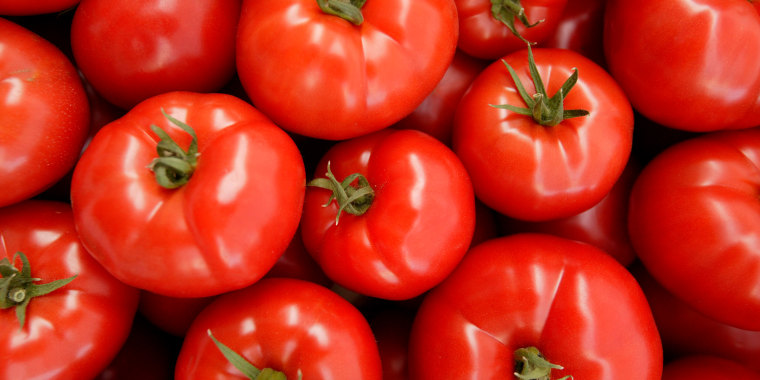Sunshine vitamin, meet the world’s most popular fruit.
Tomatoes (yes, they’re technically a fruit, though the U.S. government considers them a vegetable for “nutritional and culinary purposes”) can be genetically-engineered to contain vitamin D, researchers recently reported in Nature Plants.
The modification could offer a new way to address vitamin D deficiency, a “global health problem” that affects about 1 billion people around the planet, they noted.
The gene-edited tomatoes could also create a plant-based source of the vitamin for vegetarians and vegans, whether eaten fresh, sun-dried or transformed into supplements.
“We are not only addressing a huge health problem, but are helping producers, because tomato leaves which currently go to waste, could be used to make supplements from the gene-edited lines,” said Cathie Martin, a corresponding author of the study and professor at the John Innes Centre in the UK, in a statement.
The option would provide a “leap forward in decreasing our dependence on animal-based foods,” researchers from the Laboratory of Functional Plant Biology at Ghent University in Belgium wrote in an accompanying commentary.
Would consumers accept gene-edited tomatoes?
Tomatoes are a popular crop: With 100 million tons produced around the world each year, according to the Food and Agriculture Organization of the United Nations, they've been called the world’s favorite fruit.
Here’s how the modification works: The building blocks of vitamin D are naturally present in tomato plant leaves, but don’t accumulate in ripe fruit, so researchers used CRISPR-Cas9 gene editing technology to revise the plant’s genetic code to allow that to happen, according to the John Innes Centre.
The concept sounds very preliminary, but it’s interesting, scientifically valid and sound: Boost pre-vitamin D in the fruit, then convert it to active vitamin D with UVB rays — like in our skin, said NBC News Health and Nutrition Editor Madelyn Fernstrom. She estimated a person would have to eat six of the special tomatoes to meet their daily vitamin D needs.
“This is an excellent use of gene-editing technology,” Fernstrom told TODAY. But there’s a “great bias” in the U.S. and Western Europe against gene-splicing technology, though people living outside those regions welcome it to help grow food in bad climates and improve crop yields, Fernstrom said.
“As a worldwide option, where supplements are not readily available, this is an excellent population solution. I don’t think it would be embraced in the USA — nor does it need to be. (There are) easier ways to get vitamin D,” she noted.
Why do we need vitamin D?
Vitamin D helps to build and maintain healthy bones, but it’s also deeply involved in human health in other ways, nutritionists say. The body makes vitamin D when skin is exposed to sunlight outdoors. When people don’t get enough of this micronutrient, it can impact immune function and inflammation. Deficiency has been linked with cancer, Parkinson’s disease and dementia.
Infants need 400 international units of vitamin D, children and adults need 600 IU, and older adults over 70 need 800 IU, according to the National Institutes of Health.
Abundant data show people around the world don’t get enough vitamin D due to reasons that vary by country, including sunscreen use, clothing covering the body and not much time spent outdoors, Fernstrom said. Darker skin contains more melanin, which acts as a natural sunblock and reduces vitamin D absorption, she added.
Foods, for the most part, are not good sources of vitamin D — only fatty fish like salmon contain much of it — so many foods are fortified. In America, most people take supplements to meet their need, Fernstrom said.
“As a rule of thumb, except for fatty fish, most fortified foods like dairy, cereals, juice contain about 150 IU of vitamin D. About four servings of a combination of these foods can meet many people’s needs, but a modest supplement is often helpful,” she noted.

